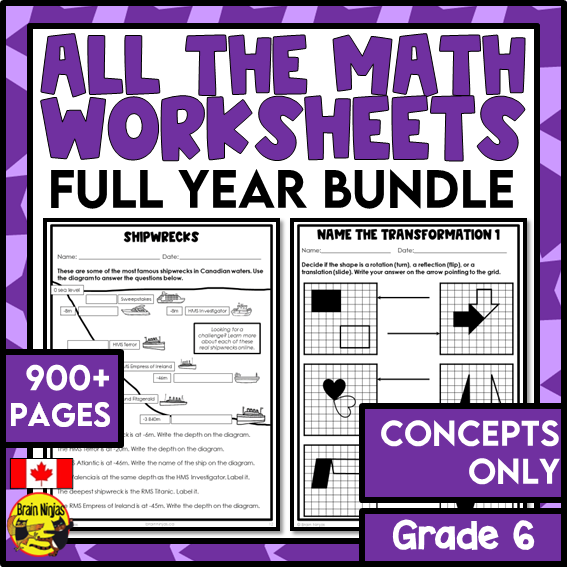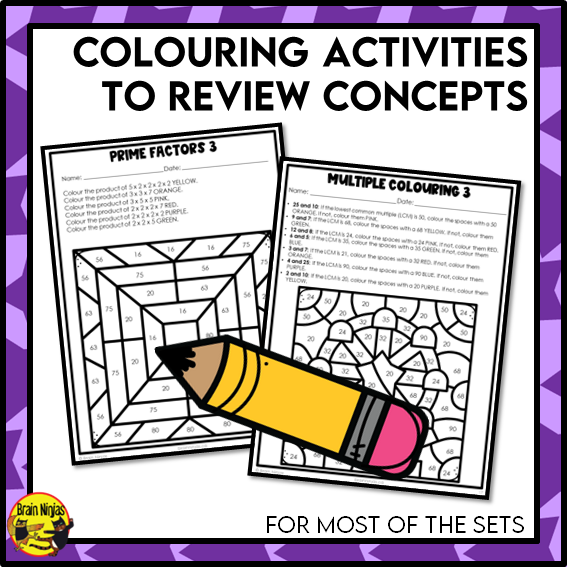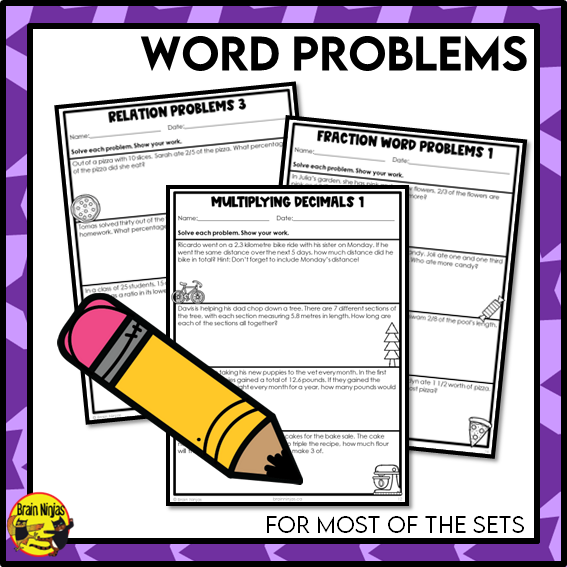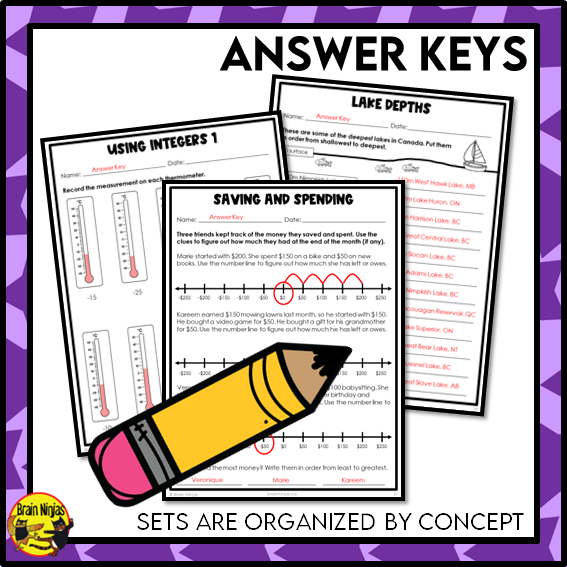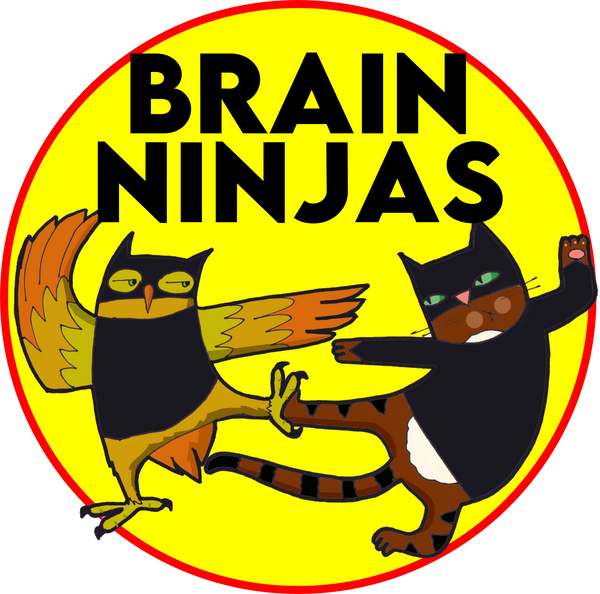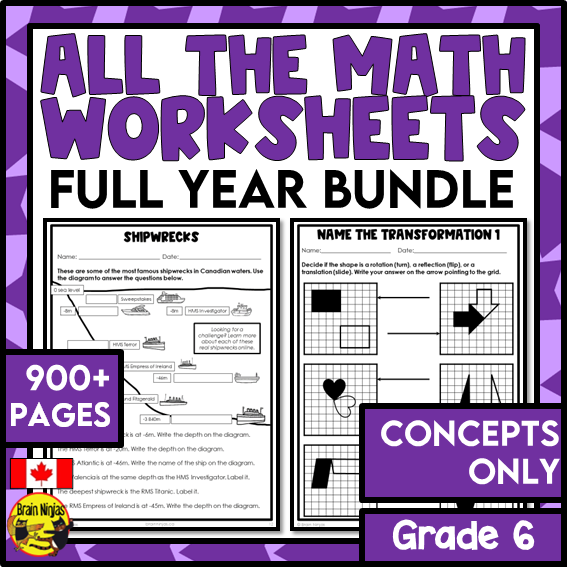1
/
of
5
Math Worksheets Full Year Bundle With Concepts Only | Paper | Grade 6
Math Worksheets Full Year Bundle With Concepts Only | Paper | Grade 6
Regular price
$217.00 CAD
Regular price
$310.00 CAD
Sale price
$217.00 CAD
Unit price
/
per
Tax included.
Couldn't load pickup availability
Practice or assess Grade 6 math concepts with these math worksheets. Use them for practice, review, or assessment. They only take moments to prep and make differentiation easy peasy. None of these worksheets contain references to holidays or celebrations.
This simple math resource includes:
- 900+ worksheet-styled pages to practice a variety of math concepts for Grade 6 in Canada.
- math concept sets without any references to holidays.
- 15 pages in each set.
- no repeat questions for any of the sets (same style-different questions)
- word problems to reinforce concepts when possible.
- colouring activities to reinforce concepts when possible.
- pages that can easily be used as assessments.
- answer keys or suggested answers for all the pages.
- Canadian/British spellings and metric measurements.
- SI Notation, so numbers are written with spaces between place values instead of commas. (Example: 800 000 instead of 800,000).
Topics included are:
- number and integers: numbers up to 1 000 000 000, representing and decomposing numbers using standard form, words, Place value charts, and expanded form, shorthand numbers 1.4 billion, comparing numbers using <, >, = signs, ordering numbers using number sequences, number lines and terms like greatest and least, identifying integers, integer opposites (additive inverses), comparing integers with <, >, = signs, ordering integers using number sequences, number lines and terms like greatest and least
- number operations: assessing the reasonableness of estimations to billions will any operation, identifying prime and composite numbers, prime factorization within 100, greatest common factors, lowest common multiples, sorting multiples within 1 000, multiples and factors in Venn and Carroll diagrams, sorting factors and multiples in Venn and Carroll diagrams, division of 2 or 3 digits by 2 digits with and without remainders. (Remainders can be expressed as whole numbers, fractions and decimals.), order of operations with all operations, brackets and exponents, adding and subtracting integers
- decimals, fractions, ratios and percent: calculating money using addition, subtraction, multiplication and division, multiplying and dividing decimals with 1 or 2-digit multipliers and divisors, converting mixed and improper fractions, comparing mixed and improper fractions, multiplying and dividing mixed & improper fractions, introduction to ratios and percent, relating ratios & percent to decimals and fractions, calculations involving percent and discounts
- patterns and algebra: solving for an unknown whole number in equations with two or more different operations, using the order of operations (with brackets and exponents) to solve for the value of a variable, finding patterns on a coordinate plane, plotting coordinates and discrete data on a coordinate plane (First Quadrant only), analyzing the information in a table or on a plane
- statistics and probability: interpreting and reading graphs for data: bar graphs, line plots, pictographs, double bar graphs stem and leaf plots, broken line graphs, continuous line graphs, discrete data points, describing theoretical and experimental probability outcomes, representing probability outcomes as fractions
- measurement: perimeter of complex polygons, volume of rectangular prisms, comparing area and volume, area of rectangles using formulas, area of parallelograms, area of triangles, area of trapezoids, types of angles (acute, obtuse, right, straight, reflex), interior angles, volume of rectangular prisms, capacity, metric units and referents, metric conversions
- geometry: classifying triangles by measuring them with a ruler to assess side lengths (equilateral, isosceles or scalene) or protractor to assess angles (acute, right or obtuse), congruency in 2D shapes, describing attributes of tessellations: congruent shapes, patterns and symmetry, identifying multiple-event transformations: translations (slides), rotations (turns), reflections (flips), drawing transformations, plotting and reading coordinates on the first quadrant of the cartesian plane, ordered pairs
This set aligns with:
- Alberta Program of Studies Mathematics Grade 6 ©2022
- British Columbia Mathematics Curricular Competencies Grade 6
- Saskatchewan Mathematics Curriculum Grade 6
This set supports:
- any Canadian Grade 6 math class, though individual sets may not align perfectly with British Columbia or Saskatchewan. See the product descriptions of individual sets for alignment.
Ninja Note: This file is a zip file. It contains all the math worksheet files which are PDFs. These worksheets require printing for students to use.
Have a question? Before contacting us, check our Frequently Asked Questions page.
